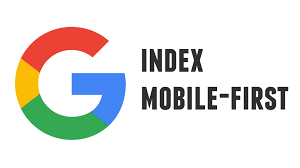Blog Title: The Evolution of Mobile-First Indexing: Google’s Completes 7-Year Journey
Blog Introduction: Mobile-first indexing has been a topic of discussion since it was first introduced by Google in 2014. This indexing process prioritizes mobile content over desktop, recognising the seo experts in India shift in user behaviour towards mobile devices. After years of testing and gradual implementation, Google has finally announced the completion of mobile-first indexing in March 2021.
Blog Body:
Why Mobile-First Indexing was Necessary
With the majority of users accessing the internet through their mobile phones and tablets, Google had to address the growing importance of mobile devices. Mobile-first indexing ensures that websites optimized for mobile devices are rewarded by ranking higher in search engine results pages. It also helps businesses reach a larger audience, especially in emerging markets where desktop usage is minimal.
The Journey to Completion
Google had initially announced mobile-first indexing in 2016, but it took several years for the company to test the process with a small percentage of sites before rolling it out progressively. Google also provided webmasters with resources and tools to make the transition easier. The company finally announced the completion of mobile-first indexing in March 2021, stating that it had transitioned the majority of sites to this system.
Benefits of Mobile-First Indexing
Mobile-first indexing has brought several benefits to businesses and users alike. It ensures that sites are optimized for mobile devices, contributing to a seamless user experience. With mobile devices being seo experts in Haridwar the primary source of internet usage, mobile-first indexing provides an opportunity for businesses to reach a wider audience and improve customer engagement. Additionally, it incentivizes website owners to make their sites more mobile-friendly, improving the overall quality of content available online.
The Future of Mobile-First Indexing
With the completion of mobile-first indexing, Google is expected to focus on improving the quality of mobile content. This will result in updates that help businesses optimize their mobile content, thereby improving their ranking in search engine results pages. Additionally, with voice search and virtual assistants becoming increasingly popular, Google is expected to further prioritize mobile content to enhance the user experience.
What Next for Businesses
With Google’s focus firmly on mobile devices, businesses need to adapt quickly to ensure they remain relevant in the changing landscape. They must prioritize mobile-optimization, ensuring their sites are easy to navigate and load quickly on mobile devices. This includes using responsive designs that adapt to any screen size, optimizing images and videos and using larger font sizes.
Conclusion:
It has been a long seven years, but with mobile-first indexing, Google has finally adapted to the changing trends in user behaviour towards mobile devices. This transition has brought several benefits, including improved user experience, wider audience reach, and better quality of content. Mobile-first indexing has also incentivized businesses to prioritize mobile-optimization, which helps them stay ahead of the curve and remain relevant in today’s digital age. We can now expect further enhancements to mobile content and a continued focus on mobile-optimization. The future is mobile, and businesses must adapt quickly to stay on top.



